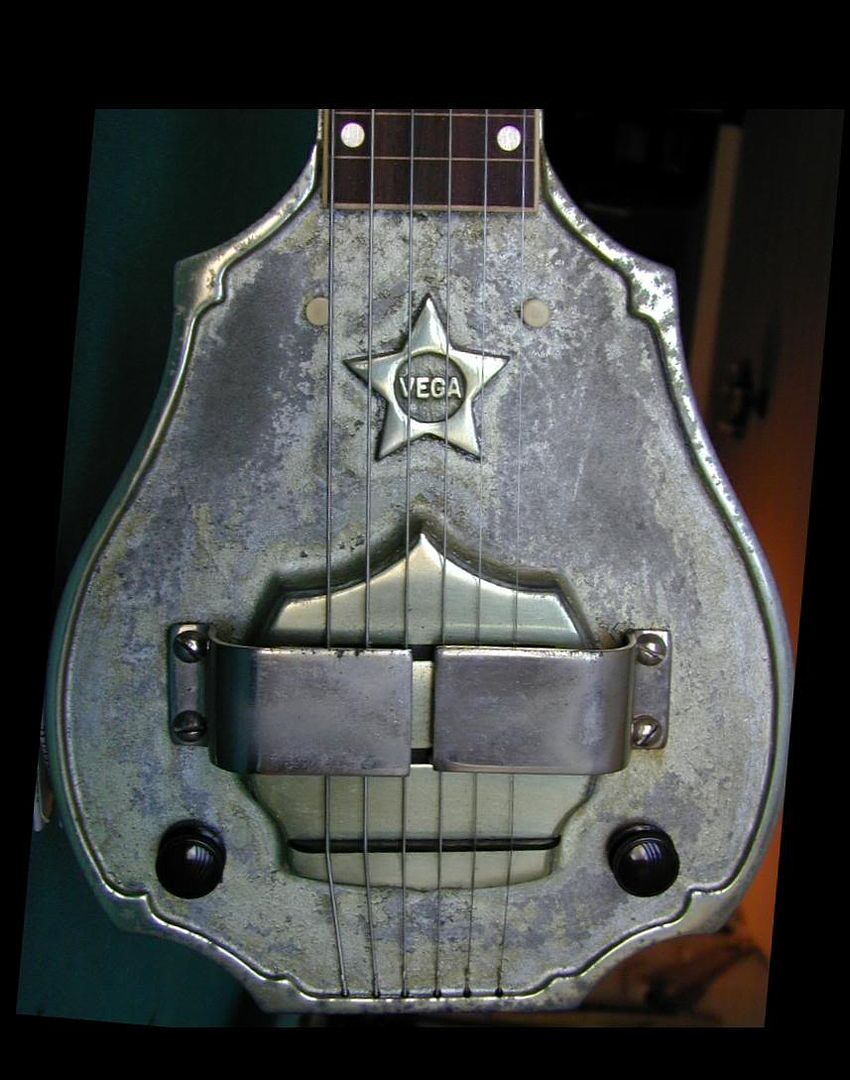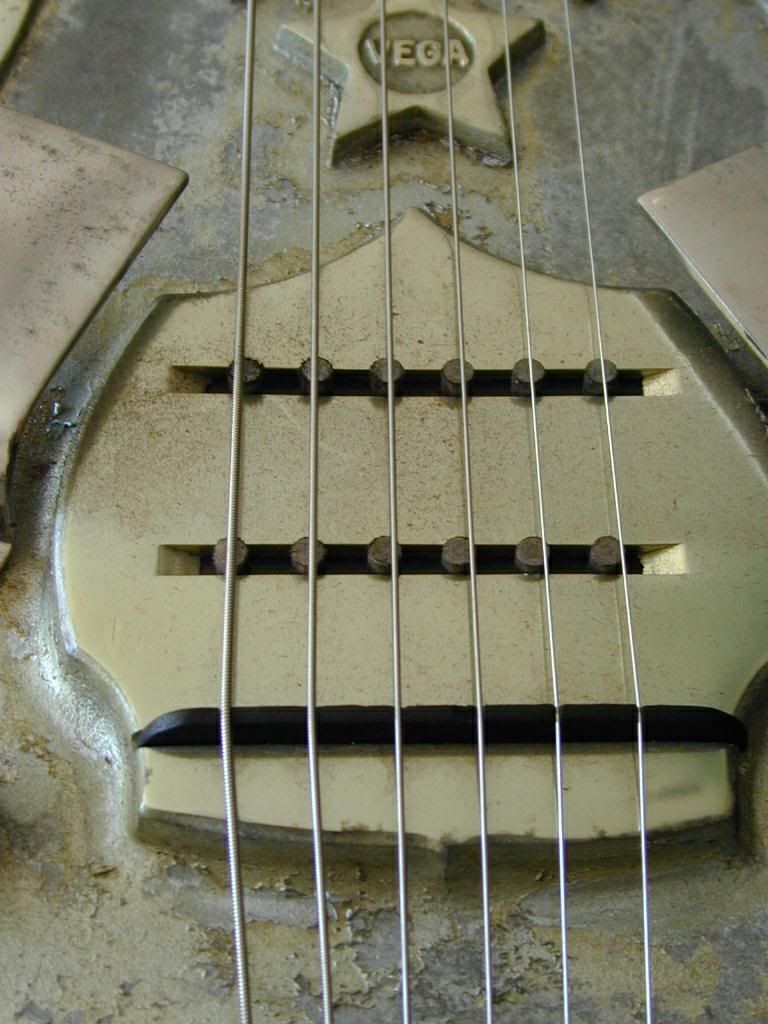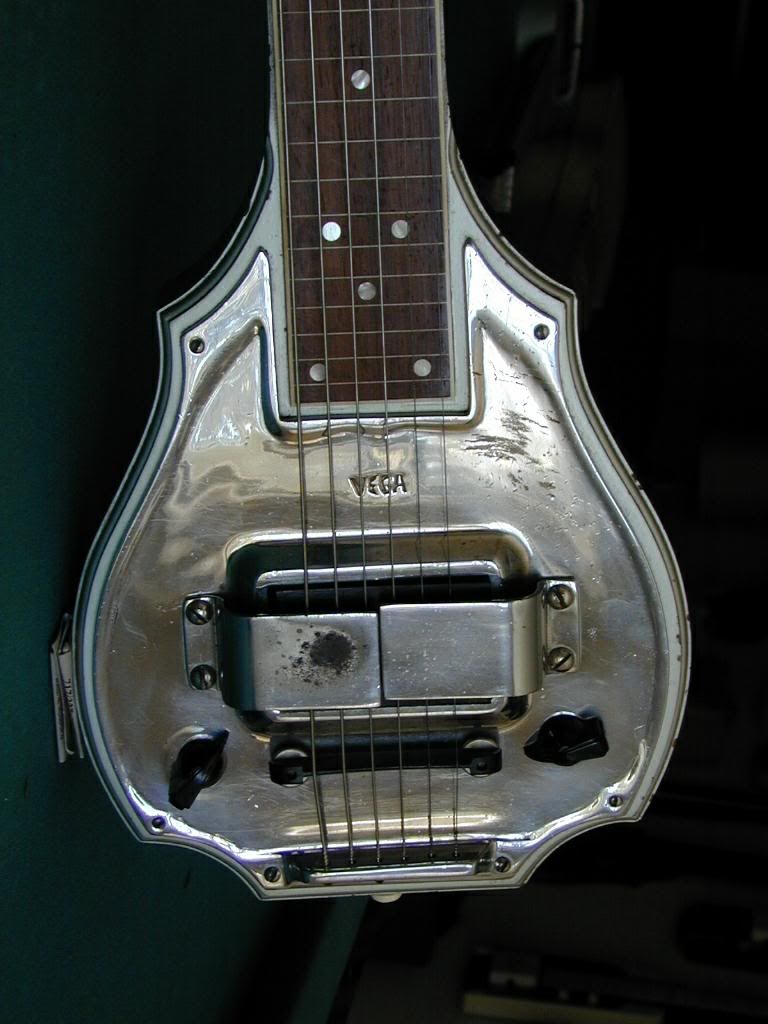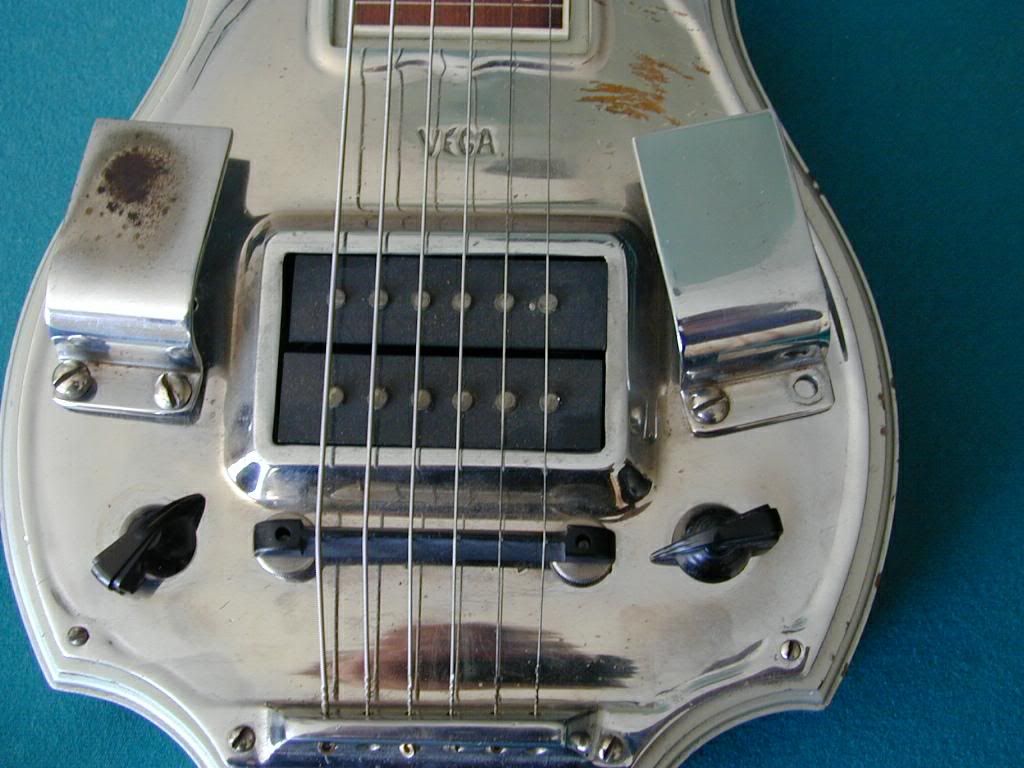There's a lap steel on ebay making that claim.
http://www.ebay.com/itm/Rare-Vintage-19 ... 1078wt_673
That'd be way before Gibson's claim. Like decades before. So I searched & looked up the patents that might apply and did not find anything to indicate a humbucker. Indeed the only patent that came up was Nelson's 1928 apparatus for amplifying musical instruments: http://ip.com/patent/US1994919
I know of the Vega Dual Tone p'ups.
But I have not seen one of these Vega horseshoe p'ups up close.
I recall Lynn Wheelwright having something similar. Are you out there Lynn?
Anyway, it's an interesting guitar with interesting claims being laid to it. I'm curious to find if some of my more knowledgeable brethern might know more about these?
?s on a Vega pickup? Claims to be 1st humbucking (in 1930s)
Moderator: Brad Bechtel
-
John Bushouse
- Posts: 704
- Joined: 6 Dec 2003 1:01 am
- Richard Shatz
- Posts: 669
- Joined: 23 Aug 2004 12:01 am
- Location: Quincy, IL, United States
I own 2 instruments that have pickups with that configuration. They do not have horseshoe magnets. The horseshoe magnet appearing metal pieces act only as a hand rest that covers the pickup. They are definitely dual coil pickups. However, I don't know whether they are wire in phase or out of phase. Obviously, if they are wired in phase they're not humbucking pickups.








Thanks for the response(s).
Richard, nice examples. Your photos are great. The detail illustrates the fact the horseshoe look is simply a cover plate. That is just as expected.
So now the question is just whether the 2 p'ups are in phase or not? Humbucking or not?
John, Good point. I've never really been clear as to whether Gibson claimed the 1st humbuckers or that was just broadly assumed because they were popularized by Gibson. We have been aware of several others that did indeed come up with humbuckers well prior to Gibson's introduction to the marketplace.
So now maybe a good question to evolve out of this is who actually did make the 1st humbuckers?
Richard, nice examples. Your photos are great. The detail illustrates the fact the horseshoe look is simply a cover plate. That is just as expected.
So now the question is just whether the 2 p'ups are in phase or not? Humbucking or not?
John, Good point. I've never really been clear as to whether Gibson claimed the 1st humbuckers or that was just broadly assumed because they were popularized by Gibson. We have been aware of several others that did indeed come up with humbuckers well prior to Gibson's introduction to the marketplace.
So now maybe a good question to evolve out of this is who actually did make the 1st humbuckers?
- Brad Bechtel
- Moderator
- Posts: 8146
- Joined: 4 Aug 1998 11:00 pm
http://en.wikipedia.org/wiki/Humbucker might help. People make all sorts of claims on eBay auctions - I'd take it with a very large grain of salt, personally.
Brad’s Page of Steel
A web site devoted to acoustic & electric lap steel guitars
A web site devoted to acoustic & electric lap steel guitars
- Noah Miller
- Posts: 1412
- Joined: 19 Oct 2009 1:34 pm
- Location: Rocky Hill, CT
I used to have one of that same model. It's absolutely a true humbucking pickup, and a superb sounding one at that. The output on mine was a tad weak (well, not for the period it was built), but it had a beautiful, warm tone and a raunchy bite when overdriven.
This was likely the first humbucking pickup, though Vega's history in the late '30s is hard to pin down when it comes to electric instruments. There were other humbuckers around by the early '40s, such as those by National-Dobro/Valco, so anyone claiming that Gibson sold the first humbuckers in '57 is way off.
This was likely the first humbucking pickup, though Vega's history in the late '30s is hard to pin down when it comes to electric instruments. There were other humbuckers around by the early '40s, such as those by National-Dobro/Valco, so anyone claiming that Gibson sold the first humbuckers in '57 is way off.
- Steve Ahola
- Posts: 1004
- Joined: 26 Jan 2010 3:45 pm
- Location: Concord, California
- Contact:
Hum-cancelling vs Humbucking
I believe that the expression "humbucker pickup" was first used in reference to the pickup that Seth Lover patented in 1955. The hum-cancelling property of his pickup was not what he patented but the specific arrangement of its component parts, like how a single magnet was able to induce opposite magnetic polarities in the two coils. Here is a PDF of the patent application:
http://www.blueguitar.org/new/misc/pate ... _lover.pdf
If the Vega was the first hum-cancelling pickup then the Supro strap-over pickup was probably the second. The Supro illustrates one of properties of hum-cancelling pickups: the two coils need to be wound in opposite directions. The actual magnetic polarity of the coils does not affect the hum-cancelling ability, although unless the two coils are of opposite polarity the resulting pickup will be out of phase.
The Supro pickup consists of two coils wound in opposite directions connected in series but with the same magnetic polarity so they are out of phase; however since each string is sensed by only one of the two coils the fact that the coils are out of phase is not a problem.
The Seth Lover patent includes a similar split coil design in Figures 7 & 8, but it uses 6 magnetic pole pieces of the same polarity, remarkably similar to the Fender P-Bass split pickup design introduced in 1957. BTW although the Seth Lover patent shows the two coils connected in series, connecting them in parallel will also have a hum-cancelling effect producing a clearer signal but at a reduced volume.
BTW one way to make a single coil pickup hum-cancelling is to add a "dummy coil", which is a coil with no load (the pole pieces) and no magnet. The dummy coil needs to be wired in the opposite direction as the single coil pickup and should be mounted in the same plane so that it is picking up the same interference. The two coils can be wired in series or in parallel.
Steve Ahola
http://www.blueguitar.org/new/misc/pate ... _lover.pdf
If the Vega was the first hum-cancelling pickup then the Supro strap-over pickup was probably the second. The Supro illustrates one of properties of hum-cancelling pickups: the two coils need to be wound in opposite directions. The actual magnetic polarity of the coils does not affect the hum-cancelling ability, although unless the two coils are of opposite polarity the resulting pickup will be out of phase.
The Supro pickup consists of two coils wound in opposite directions connected in series but with the same magnetic polarity so they are out of phase; however since each string is sensed by only one of the two coils the fact that the coils are out of phase is not a problem.
The Seth Lover patent includes a similar split coil design in Figures 7 & 8, but it uses 6 magnetic pole pieces of the same polarity, remarkably similar to the Fender P-Bass split pickup design introduced in 1957. BTW although the Seth Lover patent shows the two coils connected in series, connecting them in parallel will also have a hum-cancelling effect producing a clearer signal but at a reduced volume.
BTW one way to make a single coil pickup hum-cancelling is to add a "dummy coil", which is a coil with no load (the pole pieces) and no magnet. The dummy coil needs to be wired in the opposite direction as the single coil pickup and should be mounted in the same plane so that it is picking up the same interference. The two coils can be wired in series or in parallel.
Steve Ahola
www.blueguitar.org
Recordings on electric guitar:
http://www.box.net/blue-diamonds
http://www.box.net/the-culprits
Recordings on electric guitar:
http://www.box.net/blue-diamonds
http://www.box.net/the-culprits